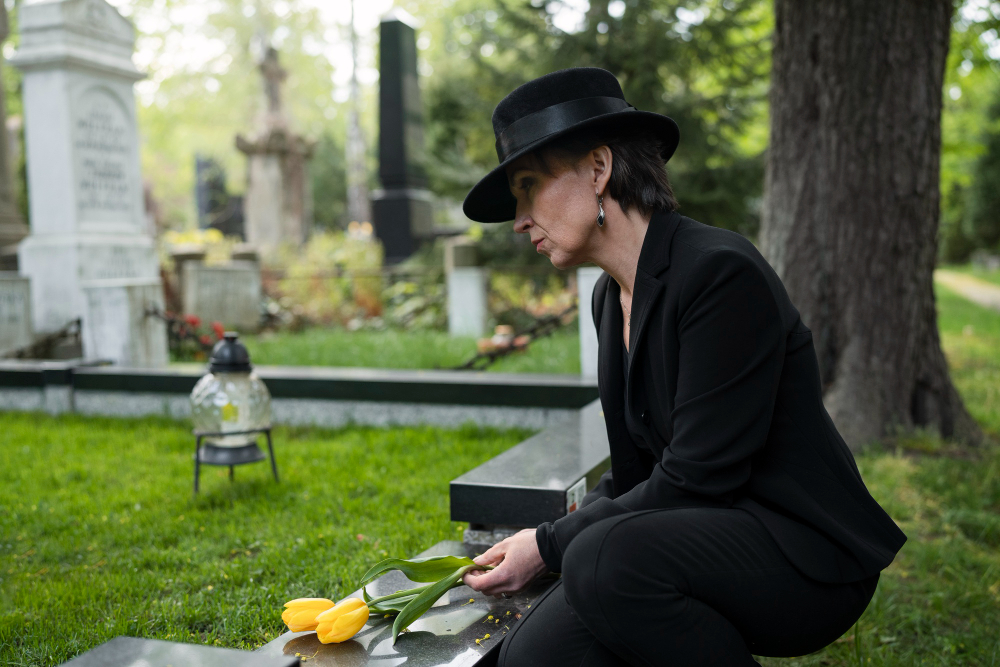I. The Clinical Foundation: Understanding Dermatillomania and CBT I.A. Dermatillomania: Definition, Prevalence, and Clinical Classification Dermatillomania, often referred to as Compulsive Skin Picking (CSP) or Excoriation Disorder (Skin Picking Disorder, SPD), is a condition characterized by repetitive skin manipulation that results in significant tissue damage (lesions). Clinically, this disorder holds a crucial placement within the …
CBT for Skin Picking: The Complete Guide to Stopping Dermatillomania

I. The Clinical Foundation: Understanding Dermatillomania and CBT
I.A. Dermatillomania: Definition, Prevalence, and Clinical Classification
Dermatillomania, often referred to as Compulsive Skin Picking (CSP) or Excoriation Disorder (Skin Picking Disorder, SPD), is a condition characterized by repetitive skin manipulation that results in significant tissue damage (lesions). Clinically, this disorder holds a crucial placement within the Diagnostic and Statistical Manual of Mental Disorders, Fifth Edition (DSM-5), classified as an Obsessive-Compulsive and Related Disorder. This classification underscores the repetitive and often compulsive nature of the behavior, highlighting the significant difficulty individuals experience when attempting to decrease or stop the action.
Despite its pervasive nature, Dermatillomania is widely considered an under-recognized condition in general clinical settings. Current estimates suggest that Excoriation Disorder affects approximately 2.1% of U.S. adults currently, with a lifetime prevalence potentially reaching 3.1%. The condition imposes a severe functional burden; individuals often dedicate substantial time—sometimes several hours per day—to engaging in the picking behavior itself, or to the exhausting effort of resisting the powerful urges. This cycle leads to clinically significant distress and substantial functional impairment across essential areas of life, including social engagement and occupational performance. The shame, social avoidance, and reported loss of control inherent in this condition mandate a specialized, robust treatment approach.
Dermatillomania is categorized under the umbrella term of Body-Focused Repetitive Behaviors (BFRBs), which describes self-grooming actions that lead to physical damage despite continuous efforts to stop. This category includes other disorders such as Trichotillomania (hair pulling) and nail biting (Onychophagia). BFRBs share common neurobiological models, often related to the dopamine and glutamate monoamine systems, and frequently respond well to shared behavioral treatment approaches. The formal diagnostic criteria for Excoriation Disorder strictly require recurrent skin picking resulting in lesions, coupled with repeated, unsuccessful attempts to decrease or stop skin picking, and must not be attributable to substance use, medical conditions (e.g., scabies), or other mental disorders.
Table 1: DSM-5 Criteria for Excoriation (Skin Picking) Disorder
| Criteria Component | Description |
| Recurrent Behavior | Repetitive skin picking resulting in lesions. |
| Repeated Attempts to Stop | Persistent effort to decrease or stop skin picking. |
| Distress or Impairment | The behavior causes clinically significant distress or functional impairment (e.g., social avoidance, shame). |
| Exclusion Criteria | Not attributable to substance use, medical conditions (e.g., scabies), or other mental disorders (e.g., BDD). |
I.B. Analyzing the Skin Picking Cycle: Triggers and Consequences
Effective intervention for dermatillomania hinges on a comprehensive understanding of the specific triggers that initiate the picking cycle. The behavior itself varies widely, often falling into two distinct categories: ‘Automatic picking,’ which occurs without the individual’s full conscious awareness, frequently during periods of boredom or while sedentary (e.g., watching television); and ‘Focused picking,’ which is intentional, driven by a conscious effort to correct a perceived imperfection, such as smoothing a rough spot or removing a specific blemish.
These triggers are diverse, encompassing internal states and environmental factors. Emotional or affective triggers include generalized states of stress, anxiety, sadness, and boredom, or, more specifically, a painful buildup of internal tension. The act of picking often serves as a maladaptive, immediate relief mechanism for this internal tension caused by frustration or impatience. Sensory triggers are physical phenomena on the skin, such as dry patches, pimples, or coarse hairs, which create an irresistible tactile pull to “fix” or extract. Cognitive triggers are rooted in rigid or perfectionistic thinking, driven by the belief that the skin must be perfectly flawless. Finally, place or situational triggers include environments that facilitate picking, such as high-contrast lighting, magnifying mirrors, or the easy availability of tools like tweezers.
The immediate consequence of picking is a temporary reduction in tension or a sense of satisfaction, which negatively reinforces the behavior. However, the long-term results are profoundly detrimental. Physically, picking can lead to cuts, bruising, chronic wounds, infections requiring aggressive treatment, and, in severe cases, extensive scarring that may necessitate surgical repair. Psychosocially, the disorder is associated with significant psychological distress, feelings of shame and loss of control, and subsequent social avoidance. Crucially, Dermatillomania frequently co-occurs with other mental health challenges, notably co-morbid anxiety and low mood (depression). Therefore, treatment must be formulated to address these complex, interacting factors to successfully achieve the goal of stopping skin picking.
I.C. CBT: Why Behavioral Therapy is Superior to Medication
Cognitive Behavioral Therapy (CBT) is internationally recognized in clinical guidelines as the recommended psychological intervention for Dermatillomania. CBT’s efficacy stems from its comprehensive approach: it teaches individuals to analyze the interrelationship between their thoughts (Cognitive components) and their behavioral responses (Behavioral components), providing actionable strategies for interrupting and changing destructive cycles.
The evidence comparing behavioral intervention with pharmacotherapy is clear: specialized behavioral therapy, particularly Habit Reversal Training (HRT) and its augmentations, has been consistently shown to be effective and is considered superior to using medication alone for long-term symptom management. While Selective Serotonin Reuptake Inhibitors (SSRIs), such as Fluoxetine (Prozac) and Sertraline (Zoloft), may be utilized to address common co-morbidities like anxiety or depression, thereby reducing affective triggers, they do not inherently teach the core behavioral skills necessary to interrupt and stop skin picking. Therefore, specialized CBT techniques form the fundamental, indispensable core of the treatment protocol.
II. Habit Reversal Training (HRT): The Essential Toolkit for Stopping Skin Picking
Habit Reversal Training (HRT) is recognized as the foundational, evidence-based component of CBT specifically tailored for Body-Focused Repetitive Behaviors. Developed over 50 years ago, HRT is now the core approach for managing Excoriation Disorder. Clinical outcomes support its use, demonstrating strong treatment effects, with effect sizes ranging up to g=1.54 for excoriation, especially when delivered through structured methods like virtual therapy, suggesting high potential for widespread access to effective care.
II.A. Step-by-Step Awareness Training: Bringing the Habit into the Light
The primary aim of Awareness Training is to elevate the automatic, unconscious picking habit to a level of focused, deliberate action, creating the narrow window required for intervention.
This process begins with rigorous Self-Monitoring. The client tracks the behavior meticulously, recording data points such as frequency, location, time of day, and specific antecedents and consequences. This functional analysis is vital for establishing the patterns and situational cues associated with the behavior.
The next stage involves Response Description and Detection. The individual, perhaps using a mirror, learns to observe and verbally articulate the entire muscular and physical sequence of the picking behavior. This intensive focus on the physical movements ensures the client is consciously aware every time the behavior occurs, effectively forcing the habit out of the automatic realm.
The ultimate goal is Early Warning Training. This focuses on detecting the extremely subtle precursors—the early signs, slight shifts in posture, specific thoughts, or physical sensations (e.g., tension, roughness, or the initial urge)—that occur before the fingers make contact with the skin. This precise, anticipatory awareness identifies the exact moment of choice—the critical point where the intervention must be applied. Importantly, if the early warning is linked to a physical sensory trigger (like dryness or an itch), recognizing this link immediately informs the selection of a healthy sensory-based replacement strategy.
II.B. Competing Response (CR) Training: Replacing Harm with Action
A Competing Response (CR) is a deliberate, physical action that is functionally incompatible with the picking behavior, making it physically impossible to pick while performing the CR. The CR is immediately implemented upon detection of an early warning sign or urge.
The competing action should strategically utilize the same muscles or antagonistic muscle groups required for the picking action. For instance, since picking requires fine motor control of the fingers, effective CRs involve gross motor inhibition of these movements, such as tightly clenching the hands into fists, locking the arms, or gripping a stationary object like the sides of a book. Other clinically supported examples include sitting directly on the hands or playing with moldable substances like clay or Silly Putty.
A crucial clinical instruction is the 60-Second Rule: the CR must be maintained for a prescribed duration—often a minimum of one minute—or until the physical intensity of the urge demonstrably subsides. This time commitment allows the neurological urge pathway to dissipate and prevents the impulse from progressing to destructive action. To ensure rapid adoption, the CR must be practiced consistently, perhaps five times per day in low-stress environments, until the adaptive response becomes an automatic replacement for the unwanted habit.
II.C. Reinforcement and Motivation: Making Change Sustainable
Motivation is universally acknowledged as a vital element for sustained recovery, particularly because deeply ingrained habits can take significant time—some models suggest up to 40 weeks—to fully break and replace.
Contingency Management supports motivation by creating a structured system of positive reinforcement. Patients are consistently praised or rewarded by their caregivers and clinicians specifically for successfully executing the Competing Response, rather than solely for avoiding the picking behavior. This strategy reinforces the development of positive, functional skills.
Integral to the HRT process is the use of Social Support. Involving loved ones and family members to provide positive feedback, encouragement, and timely, gentle reminders to utilize coping skills strengthens the intervention significantly. This support system is critical for weathering the setbacks and periods of high urge intensity inherent in the long-term recovery process.
III. Stimulus Control (SC): Modifying the Environment and Sensory Input
Stimulus Control (SC) is the necessary behavioral augmentation to HRT, functioning to modify the physical environment and external stimuli that trigger or enable the picking action. SC is most efficacious when fully integrated into a comprehensive treatment plan, working in synergy with HRT’s internal focus on behavioral response.
III.A. Targeted Environmental Modifications
The core mechanism of SC involves changing the environment to eliminate sensory cues that lead to picking or to physically prevent the picking from occurring.
High-risk settings require deliberate intervention. Environments with bright or magnifying mirrors, such as bathrooms, are notorious triggers because they facilitate flaw-seeking behavior. Strategies include removing the magnifying mirror, covering standard mirrors, or utilizing dimmer/warmer lighting to discourage detailed inspection. The Stimulus Control mandate also requires the removal of any tools used for focused picking—tweezers, pins, or pimple extractors—which must be discarded or stored in inaccessible locations.
For periods of high risk, such as automatic picking during sedentary activities (reading, watching TV), physical barriers are crucial. Effective, though sometimes initially unpopular, specific SC strategies involve wearing gloves, finger cots, or placing colloid patches over identified picking spots. Furthermore, if picking is exacerbated by isolation, modifying the circumstances to spend more time around others can increase social accountability and reduce the opportunity for picking.
III.B. Sensory Substitution: Addressing the Tactile Urge
A crucial clinical understanding highlights that skin picking often represents a misdirected attempt at self-regulation, satisfying a potent sensory need or relieving overwhelming internal tension. Research suggests that individuals with Excoriation Disorder may experience tactile over-responsivity, leading them to use intense self-stimulation (picking) to redirect attention from external stressors to internal sensations. Consequently, simply blocking the behavior without providing an alternative sensory outlet will often result in a difficult rebound urge.
Sensory Substitution techniques actively address this need by providing harmless, alternative tactile input. If dryness is a precursor to picking, applying lotion or a barrier cream fulfills the sensory need in a healthy way. Placing colloid patches over blemishes provides a smooth sensory barrier while allowing healing. For restless hands and the need for complex manipulation, highly tactile fidget tools are recommended. These include objects that provide deep pressure input or complex engagement, such as metal interlocking loops, the Springy Coils Fidget™, or Spiky Roly Poly Oodles Balls, satisfying the craving without self-harm.
Beyond specific items, general stimulus control strategies involve holistic health practices, such as maintaining a good skincare routine, regular exercise, effective stress management, and, most critically, treating underlying dermatological conditions like eczema or acne that serve as physical triggers.
IV. Cognitive Restructuring: Challenging Perfectionism and Core Beliefs
The Cognitive component of CBT is designed to systematically identify and neutralize the destructive thought patterns that generate distress and perpetuate the skin picking cycle.
IV.A. The Cognitive Triggers: Perfectionism and Self-Judgment
A primary driver for focused skin picking is overwhelming perfectionism, manifesting as the rigid belief that the skin must be “perfect” or “smooth”. The compulsive act of picking is often an attempt to improve or correct a perceived flaw. This behavior creates a paradoxical outcome: the pursuit of flawlessness generates visible wounds, scarring, and shame, reinforcing profoundly negative core beliefs such as “I am ugly” or “People judge”.
These negative beliefs often fuel conditional assumptions, such as, “If I have spots on my face, I have to get rid of them immediately,” alongside cognitive distortions like catastrophizing (“I will never stop scratching my face”) and mind-reading (“He thinks the scars on my face are disgusting”). These faulty narratives generate intense negative affect and drive the necessity for relief through picking.
IV.B. Applying the Cognitive Restructuring Protocol
Cognitive Restructuring (CR) is a structured, evidence-based technique used to scrutinize the validity of these negative automatic thoughts (NATs) and replace them with more balanced alternatives. The protocol adapted for BFRBs follows a systematic progression:
- Identify the Situation & Emotion: Determine the specific event and the uncomfortable emotion (e.g., dissatisfaction) that preceded the urge.
- Identify the Negative Automatic Thought (NAT): Capture the exact self-statement or judgment that prompted the behavior (e.g., “This spot must be smoothed out”).
- Evaluate the Evidence (Accuracy Check): Critically analyze the NAT. What concrete evidence supports this thought? What evidence refutes it? The most crucial challenging question focuses on behavioral tolerance: “Am I willing to tolerate this temporary discomfort or imperfection to stop the picking cycle and allow my skin to heal?”. This step shifts the perspective from mandatory correction to strategic self-care.
- Formulate a Balanced Thought: Replace the rigid, catastrophic thought with a more functional and self-compassionate statement (e.g., “My skin does not have to be flawless; I can cope with this feeling of imperfection”).
- Develop an Action Plan: If the situation reveals a genuine problem (e.g., skin redness), the action plan focuses on adaptive, non-picking solutions, such as implementing a Competing Response or seeking non-invasive dermatological management.
This process helps clients decouple their self-worth from their appearance, effectively neutralizing perfectionism as a core cognitive trigger.
V. Advanced CBT: Integrative Models (ComB, ACT, and DBT)
For cases where Dermatillomania is characterized by complex triggers, high symptom severity, or significant functional impairment, the standard HRT protocol is typically augmented by, or integrated into, more sophisticated behavioral models.
V.A. The Comprehensive Behavioral (ComB) Treatment Model
The Comprehensive Behavioral (ComB) Treatment Model is an advanced protocol designed to address the profound complexity and heterogeneity of BFRBs. The model’s development acknowledged the clinical reality that relying solely on motor-focused interventions (standard HRT) often fails when the primary driver of picking is affective distress or sensory craving. ComB offers an individualized approach, recognizing that no two individuals should be treated identically.
ComB begins with a thorough functional analysis using the SCAMP framework, which guides the tailored intervention plan by assessing triggers across five distinct domains :
- Sensory: Interventions match the individual’s specific sensory needs (e.g., substituting the sensory input from picking with a face mask, worry stones, or a scalp massager).
- Cognitive: Focuses on addressing negative beliefs and rigid thinking through mindfulness and Cognitive Restructuring.
- Affective (Emotional): Utilizes powerful emotion regulation and distress tolerance strategies (often drawn from DBT) to manage underlying anxiety, boredom, and negative mood that fuel the urge to pick.
- Motor: Integrates the classical components of Habit Reversal Training (HRT), emphasizing Competing Responses.
- Place (Environmental): Applies targeted Stimulus Control (SC) procedures, such as removing mirrors or discarding tools.
The integrated, individualized nature of the ComB model ensures that treatment strategies are functionally matched to the client’s unique pattern of picking, providing a more robust foundation for the long-term goal of stopping skin picking.
V.B. Acceptance and Commitment Therapy (ACT) for Urges
Acceptance and Commitment Therapy (ACT) is frequently incorporated to enhance the long-term effectiveness of behavioral therapies. ACT centers on fostering psychological flexibility—the capacity to pursue personally meaningful, values-driven behaviors even in the presence of uncomfortable internal experiences, such as anxiety or the intense urge to pick.
In ACT, clients learn essential skills for observing and accepting the powerful urges, emotional distress, or physical sensations without automatically acting on them. This non-judgmental acceptance contrasts sharply with the pre-existing compulsion to eliminate discomfort, which often fuels the picking cycle. Instead of fighting the urges, the individual practices commitment to actions aligned with their established values (e.g., pursuing physical health or social connections), thereby defusing the link between the urge and the compulsive behavior. This commitment to value-driven action is highly effective in sustaining recovery, even when powerful sensations persist.
V.C. Dialectical Behavior Therapy (DBT): Advanced Emotional Management
Dialectical Behavior Therapy (DBT) skills are particularly effective for individuals whose skin picking is strongly reactive to intense negative emotional states. DBT integrates into CBT protocols to provide specific, evidence-based coping mechanisms for managing intense affect and impulsivity.
DBT focuses on four core modules, with specialized techniques highly relevant to BFRB management:
- Emotion Regulation: Clients learn to identify, accurately label, and manage intense emotions, reducing their overall vulnerability to the mood states that typically trigger a picking episode. This helps stabilize the affective state, making picking less necessary as an emotional outlet.
- Distress Tolerance: This module is designed specifically to help clients cope with intense BFRB urges and emotional crises without resorting to destructive behavior. Techniques involve teaching grounding, self-soothing, and distraction skills, allowing the client to “ride the wave” of the urge until the intensity naturally decreases.
The central DBT skill of Mindfulness further strengthens treatment, promoting a present-focused awareness that increases the ability to observe both internal and external triggers without judgment, which directly supports the Awareness Training component of HRT.
VI. Collaborative Care and Long-Term Maintenance
Dermatillomania necessitates a multidisciplinary approach for complete healing and long-term recovery, encompassing both specialized psychological care and necessary medical intervention.
VI.A. The Multidisciplinary Approach to Healing
Given that skin picking results in consistent physical damage, collaboration with medical specialists is critical. Individuals with severe lesions, chronic infections, or extensive scarring must consult a dermatologist for medical management and treatment.
Furthermore, working with a dermatologist to treat underlying skin conditions, such as acne, eczema, or persistent dryness, is a crucial component of general stimulus control. These underlying conditions act as physical triggers, providing tactile imperfections that initiate the picking cycle. By medically stabilizing the skin’s surface, a key physiological driver for the urge is removed.
VI.B. The Role of Medication in Stopping Skin Picking
While behavioral therapy is the therapeutic mainstay, pharmacotherapy plays an important adjunctive role, mainly by addressing the high rates of co-morbid anxiety and depression associated with Dermatillomania.
Selective Serotonin Reuptake Inhibitors (SSRIs) and related Serotonin Reuptake Inhibitors (SRIs), including specific medications like Fluoxetine (Prozac), Sertraline (Zoloft), and Escitalopram (Lexapro), have been studied for their potential to reduce skin picking. While the precise mechanism is debated, it is hypothesized that these agents reduce the emotional vulnerability and distress that typically trigger picking episodes. For optimal outcomes, many patients benefit most from a combined treatment approach: specialized CBT/behavioral therapy providing the essential coping skills, supplemented by pharmacotherapy to stabilize co-occurring anxiety and depression.
VI.C. Next Steps: Efficacy, Recovery, and Finding an Expert
Behavioral interventions, especially those delivered in a structured manner (such as virtually administered HRT), have demonstrated clinically significant and large effect sizes for reducing picking severity. These data provide strong confirmation of the viability of behavioral treatment as the path to recovery.
It must be noted that Dermatillomania is characteristically a chronic disorder marked by periods of waxing and waning symptom intensity. Consequently, recovery is seldom linear. The long-term goal is not absolute, permanent cessation for all individuals, but rather significant symptom reduction, reduced physical harm, and vastly improved functional well-being and quality of life. Maintenance requires the ongoing use of learned HRT, SC, and cognitive skills, with a plan in place for managing the inevitable setbacks.
Individuals seeking specialized treatment must prioritize finding a clinician trained specifically in Body-Focused Repetitive Behaviors (BFRBs) or Obsessive-Compulsive Related Disorders (OCRDs). 1 This level of expertise is required to conduct the necessary functional analysis and apply the tailored, integrative CBT protocols (ComB, ACT, and DBT) that offer the greatest chance for durable success in stopping skin picking. The complexity of Dermatillomania requires a therapeutic response that is equally comprehensive and individualized.
Subscribe to Our Newsletter
Keep in touch with our news & offers










